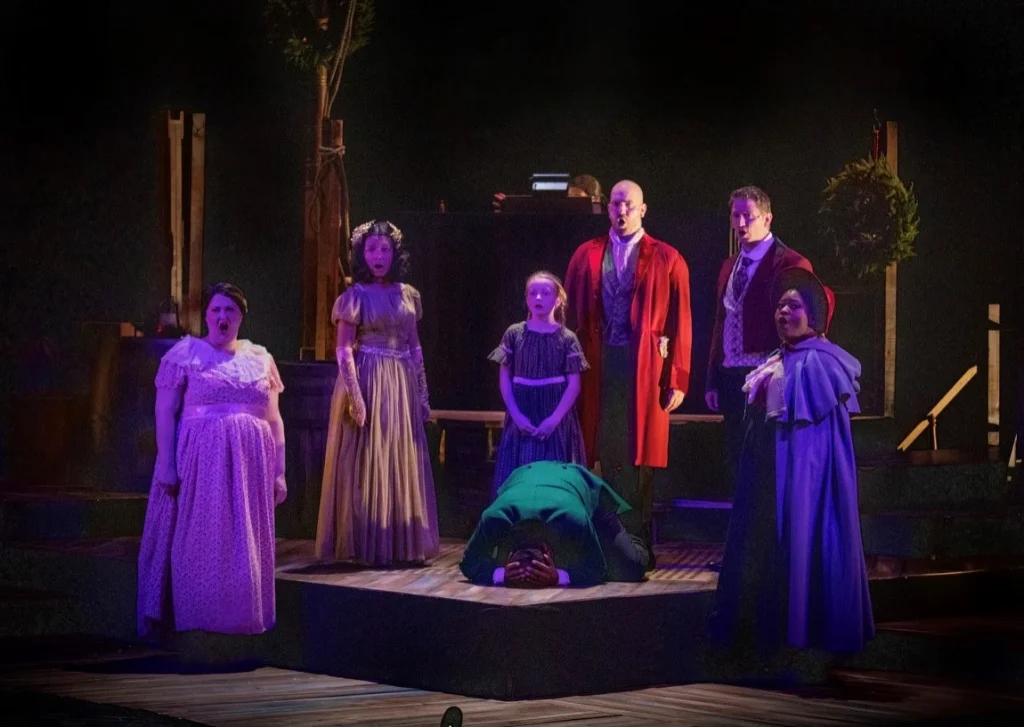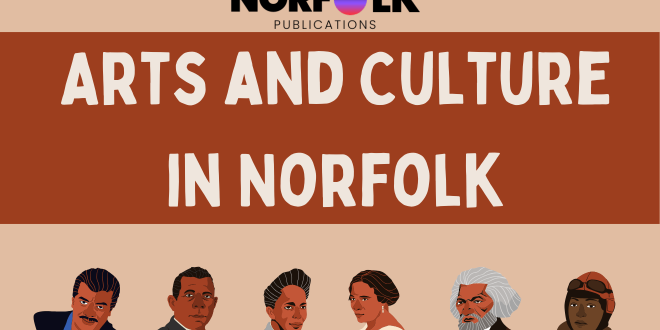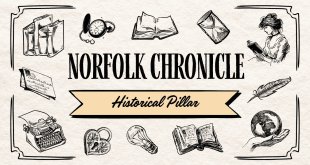Norfolk, a region renowned for its magnificent landscapes and historical value, is equally popular for its lively arts and culture scene. Nestled in the East of England, Norfolk’s creative nature is evident in its diverse collection of musical expressions, social festivals, historical landmarks, and artistic heritage. The arts and culture in Norfolk offer both locals and visitors a strong sense of identity and a glass into the area’s past, present, and future, from traditional handicraft to cutting-edge modern art.
This article will examine the essential elements that define Norfolk’s cultural landscape, including its ancient contributions to the arts, contemporary cultural hubs, festivals, and how the region continues to nourish creativity. Whether you’re an art enthusiast, a history fanatic, or someone seeking ideas, Norfolk’s arts and culture are a testament to the enduring innovative nature of this remarkable region.
Norfolk’s historic foundations for arts and culture

Norfolk’s Rich Artistic Heritage
Norfolk’s musical heritage is rooted in millennia of imagination. The state’s history as a social centre dates back to medieval times, when Norfolk’s success, driven by the wool and textile industries, supported the development of gigantic churches, guildhalls, and markets that became hubs of creative activity. These buildings, many of which remain standing today, were often adorned with intricate woodwork, stained glass, and stone carvings, showcasing the talents of local craftsmen.
Norfolk’s most recognizable contributions to the arts is its medieval church art. The county’s population is surpassed 650 medieval churches, making it the most of any area in the country. These churches are treasure troves of historical art, featuring intricate wall paintings, brasses, and fonts that date back hundreds of years. The Norfolk School of Painting, which developed during this period, produced vivid depictions of religious art in Norfolk’s grand churches, which left a lasting impression on the area.
The Norwich School of Artists
In the early 19th century, Norfolk was at the heart of a significant artistic movement: the Norwich School of Artists. The Norwich School was Britain’s first provincial art movement, founded by renowned landscape artist John Crome and later developed by his contemporary John Sell Cotman. The school was known for its atmospheric depictions of the Norfolk countryside, focusing on the natural beauty of the region’s landscapes, rivers, and rural life.
Numerous pieces from the Norwich School are currently housed at the Norwich Castle Museum and Art Gallery, showcasing the talent of Norfolk’s artists who sought inspiration from Norfolk’s distinctive environment. This museum is still one of the most important places for collectors who want to learn about Norfolk’s artistic contributions.
Norfolk’s Modern Art and Cultural Institutions
Norwich: A UNESCO City of Literature
Norfolk’s capital, Norwich, earned its prestigious title as a UNESCO City of Literature in 2012, marking its importance as a literary hub not only in the UK but internationally. Norwich has a long history of literary excellence, dating back to the 12th century, when Norwich Cathedral transformed into a hub for learning and scholarship. The city has produced a wealth of notable writers, including Sir Thomas Browne, Anna Sewell ( author of Black Beauty ), and Philip Pullman, to name a few.
The University of East Anglia’s Creative Writing Program, one of the most prestigious in the world, supports the city’s vibrant literary scene. The National Centre for Writing, located in Norwich, continues to foster a vibrant community of writers and readers by hosting workshops, readings, and festivals throughout the year. Norwich’s Writers ‘ Centre, known for its international outreach, contributes significantly to the promotion of literature, ensuring that Norfolk’s literary tradition remains as strong today as it was centuries ago.
Read also: The Norfolk Chronicle: A Historical Pillar in Local Journalism
Norfolk Museums and Art Galleries
Norfolk is home to a number of museums and galleries that exhibit both contemporary and historical art. The Sainsbury Centre for Visual Arts at the University of East Anglia, one of the leading galleries in the UK, has an extraordinary collection of art from ancient civilizations and is home to the Norwich Castle Museum and Art Gallery. The gallery is a must-see for art lovers because of its emphasis on world art and contemporary sculpture.
The Sainsbury Centre also hosts a range of temporary exhibitions, talks, and workshops, creating opportunities for community engagement and education. Additionally, its collection includes works by celebrated artists such as Henry Moore, Alberto Giacometti, and Francis Bacon, contributing to Norfolk’s reputation as a major center for the arts.
Contemporary art is promoted by galleries like the Mandell’s Gallery and Fairhurst Gallery outside of Norwich, giving local and national artists platforms to showcase their creations.
Theatre and Performance
Norfolk’s theatre scene is a thriving part of the local arts culture, with many venues hosting performances ranging from classical theatre to contemporary drama, dance, and comedy. The Norwich Theatre Royal is the county’s premier venue for large-scale productions, regularly featuring West End shows, opera, ballet, and musical performances.
The Maddermarket Theatre and the Norwich Playhouse both offer alternative experiences with a focus on local and regional talent for more intimate performances. The Maddermarket Theatre is notable for its long history, dedication to staging classic pieces by writers like Shakespeare and Chekhov, and support for the development of new writing.
Norfolk is also home to a variety of performance festivals, including the Norfolk and Norwich Festival, which is one of the UK’s oldest arts festivals. This festival showcases an eclectic mix of music, theatre, dance, and visual arts, and it continues to attract audiences from across the region and beyond.
Celebrating Norfolk’s Cultural Festivals
The Norfolk and Norwich Festival
One of the most anticipated events on the county’s cultural calendar is the Norfolk and Norwich Festival, an annual celebration of the region’s arts and culture. Spanning more than two weeks in May, the festival features an array of performances, exhibitions, and activities that celebrate the rich diversity of Norfolk’s creative talent. The festival has something for everyone, from contemporary music and dance to classical concerts and immersive visual art installations.
The Norfolk and Norwich Festival is the UK’s fifth-oldest arts festival, having its roots in 1772. One of Europe’s most renowned multi-disciplinary arts events has grown. Local and international artists are invited to showcase their work as part of the festival, fostering an exchange of ideas and cultures that highlights Norfolk’s willingness to accept influences from other countries.
King’s Lynn Festival
The King’s Lynn Festival, held each summer, is another prestigious event in Norfolk’s cultural calendar. Founded in 1951, the festival takes place in the historic market town of King’s Lynn and focuses on classical music, jazz, theatre, and visual arts. Its concerts and performances often take place in historic settings, such as the 12th-century St. Nicholas’ Chapel and the Guildhall of St George, adding a sense of timelessness and grandeur to the festival atmosphere.
Literature Festivals
Norfolk’s literary festivals are another important part of the cultural landscape. The focus of the Noirwich Crime Writing Festival, which is held in Norwich, has won praise internationally and draws writers and readers from all over the world. Other notable festivals include the Cromer and Sheringham Arts Festival, as well as the Southwold Ways With Words Festival, which also contribute to Norfolk’s vibrant literary scene.
Preserving Traditional Crafts and Folklore
Norfolk’s Craft Heritage
Essential for understanding Norfolk’s cultural identity is the promotion and preservation of traditional crafts. Norfolk has long been known for its craftsmanship, particularly in textile arts, woodworking, and pottery. These traditional skills, which were essential to the region’s economy during the Middle Ages, are still practiced by contemporary artisans who combine traditional methods with contemporary aesthetics.
The Norfolk Guild of Weavers, Spinners, and Dyers is a leading organization that promotes textile arts in the county, offering workshops, demonstrations, and exhibitions to showcase Norfolk’s craft heritage. In addition, Wymondham Arts Centre often hosts exhibitions of local craftspeople, providing a platform for both established and emerging artisans.
Folklore and Traditions
Norfolk has a rich history and folklore that reflect both its rural and agricultural heritage. These activities bring people together to observe the changing seasons and cycles of nature, from May Day celebrations to Harvest Festivals.
The Norfolk Broads, a network of rivers and lakes, have their own folklore, with tales of eerie barges and mythical creatures that still pique the imaginations of both locals and visitors. These stories are often retold during local festivals and events, keeping Norfolk’s folklore alive for future generations.
Norfolk’s Role in Contemporary Arts
Supporting Emerging Artists
Norfolk continues to be a breeding ground for emerging artists. By providing them with a platform to display their work and engage with the public, organizations like the Norfolk Contemporary Art Society and the Outpost Gallery in Norwich support young and contemporary artists. These organizations are crucial in maintaining Norfolk’s vibrant and adaptable arts scene.
Art in Public Spaces
Norfolk’s commitment to contemporary art is also visible in its public art projects. Numerous sculptures and installations that represent the area’s cultural identity are housed in both Norway’s streets and public spaces. Public art initiatives, such as the GoGoHares sculpture trail, have brought art into the community, encouraging public engagement and participation.
Norfolk’s abundance of public art shows how committed the county is to providing accessible art to everyone, creating a vibrant cultural landscape that transcends galleries and museums.
Final Words
Arts and culture in Norfolk are deeply intertwined with the county’s identity, offering a rich blend of history, tradition, and contemporary creativity. Norfolk continues to inspire and support artistic expression in all its forms, from the Norwich School‘s landscape painters and the medieval church art to the vibrant literary festivals and vibrant modern art institutions. Whether you’re drawn to the region’s cultural festivals, its museums and galleries, or its historical landmarks, Norfolk offers a vibrant and dynamic arts scene that enriches the lives of both residents and visitors alike.
Norfolk’s artistic output grows as the country’s economy grows, keeping it a beacon of creativity and culture in the UK. By embracing both its heritage and its future, Norfolk stands as a testament to the enduring power of the arts to shape, inspire, and connect communities.
 Norfolk Web Publications Web Publications in Norfolk!
Norfolk Web Publications Web Publications in Norfolk!

